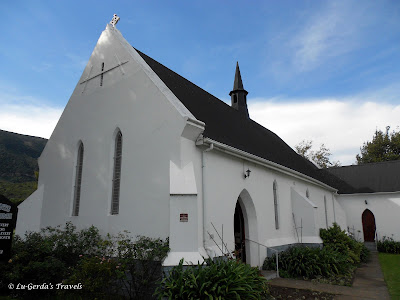Pearston

From Somerset East we drove about 50 km on the R63 to Pearston. We drove over the Bruintjieshoogte Pass (or Brown’s Height Pass) and saw some beautiful scenery. We arrived in Pearston at about 15:30. This small town in the Eastern Cape was founded in 1859 when the church was started and was named after Rev John Pears , a Scottish Reverand who came to South Africa during the 1820's as reverend for the British Settlers.. Building of the beautiful Dutch Reformed Church started in 1865 but work was stopped due to an argument between different members of the church. The corner stone was eventually laid on 25 December 1886 and the church was consecrated in 1887. The tower was added in 1899. After the quick stop in Pearston we drove the last 75 km to Graaff-Reinet on R63. We arranged to pick up the key to the room we booked at a shop at a petrol station. We picked up the key and bought some food before going to our room. ...





